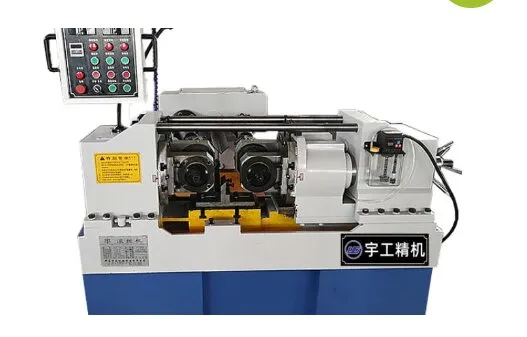
-
 Afrikaans
Afrikaans -
 Albanian
Albanian -
 Amharic
Amharic -
 Arabic
Arabic -
 Armenian
Armenian -
 Azerbaijani
Azerbaijani -
 Basque
Basque -
 Belarusian
Belarusian -
 Bengali
Bengali -
 Bosnian
Bosnian -
 Bulgarian
Bulgarian -
 Catalan
Catalan -
 Cebuano
Cebuano -
 Corsican
Corsican -
 Croatian
Croatian -
 Czech
Czech -
 Danish
Danish -
 Dutch
Dutch -
 English
English -
 Esperanto
Esperanto -
 Estonian
Estonian -
 Finnish
Finnish -
 French
French -
 Frisian
Frisian -
 Galician
Galician -
 Georgian
Georgian -
 German
German -
 Greek
Greek -
 Gujarati
Gujarati -
 Haitian Creole
Haitian Creole -
 hausa
hausa -
 hawaiian
hawaiian -
 Hebrew
Hebrew -
 Hindi
Hindi -
 Miao
Miao -
 Hungarian
Hungarian -
 Icelandic
Icelandic -
 igbo
igbo -
 Indonesian
Indonesian -
 irish
irish -
 Italian
Italian -
 Japanese
Japanese -
 Javanese
Javanese -
 Kannada
Kannada -
 kazakh
kazakh -
 Khmer
Khmer -
 Rwandese
Rwandese -
 Korean
Korean -
 Kurdish
Kurdish -
 Kyrgyz
Kyrgyz -
 Lao
Lao -
 Latin
Latin -
 Latvian
Latvian -
 Lithuanian
Lithuanian -
 Luxembourgish
Luxembourgish -
 Macedonian
Macedonian -
 Malgashi
Malgashi -
 Malay
Malay -
 Malayalam
Malayalam -
 Maltese
Maltese -
 Maori
Maori -
 Marathi
Marathi -
 Mongolian
Mongolian -
 Myanmar
Myanmar -
 Nepali
Nepali -
 Norwegian
Norwegian -
 Norwegian
Norwegian -
 Occitan
Occitan -
 Pashto
Pashto -
 Persian
Persian -
 Polish
Polish -
 Portuguese
Portuguese -
 Punjabi
Punjabi -
 Romanian
Romanian -
 Russian
Russian -
 Samoan
Samoan -
 Scottish Gaelic
Scottish Gaelic -
 Serbian
Serbian -
 Sesotho
Sesotho -
 Shona
Shona -
 Sindhi
Sindhi -
 Sinhala
Sinhala -
 Slovak
Slovak -
 Slovenian
Slovenian -
 Somali
Somali -
 Spanish
Spanish -
 Sundanese
Sundanese -
 Swahili
Swahili -
 Swedish
Swedish -
 Tagalog
Tagalog -
 Tajik
Tajik -
 Tamil
Tamil -
 Tatar
Tatar -
 Telugu
Telugu -
 Thai
Thai -
 Turkish
Turkish -
 Turkmen
Turkmen -
 Ukrainian
Ukrainian -
 Urdu
Urdu -
 Uighur
Uighur -
 Uzbek
Uzbek -
 Vietnamese
Vietnamese -
 Welsh
Welsh -
 Bantu
Bantu -
 Yiddish
Yiddish -
 Yoruba
Yoruba -
 Zulu
Zulu
roller threading machine
In the ever-evolving realm of manufacturing, the roller threading machine stands as a pivotal innovation, transforming the way threads are produced on various components. These machines are not only revolutionizing precise thread production but also ensuring efficiency across industries. Drawing on extensive expertise and insights gained from years in the field, this article delves into the intricate workings and advantages of roller threading machines.

Roller threading machines operate by utilizing hardened steel dies to form threads on cylindrical workpieces. Unlike traditional cutting methods, these machines employ a cold-forming process, which not only enhances the tensile strength of the material but also increases the surface finish and durability of the threads. This advancement reduces material wastage and improves the overall structural integrity of threaded parts.
One of the significant strengths of roller threading machines lies in their ability to produce high-precision threads consistently. From small-scale bolts to large industrial screws, these machines can handle a diverse range of materials and sizes. This adaptability is crucial for industries such as automotive, aerospace, and manufacturing, where high-stakes precision is non-negotiable. The machines are designed to accommodate various thread profiles including metric, trapezoidal, and ACME threads, thus offering versatility that meets global industry standards.

Leveraging advanced technology, modern roller threading machines incorporate digital control systems that allow for unprecedented accuracy and repeatability. Operators can program specific thread parameters and adjustments, resulting in minimal human error and optimum output. The integration of digital technology not only enhances productivity but also ensures that every thread produced adheres strictly to required specifications. This level of precision is instrumental in maintaining quality assurance in product development.
Furthermore, roller threading machines are recognized for their sustainable approach to manufacturing. The cold-forming process minimizes cutting operations, thereby reducing the consumption of cutting fluids and associated waste. This environmental benefit, coupled with lower energy requirements, aligns these machines with the growing demand for sustainable industrial practices. Businesses are particularly drawn to these eco-friendly operations as they not only cut costs but also contribute to corporate social responsibility goals.
roller threading machine
In terms of authority, the engineering behind roller threading machines reflects a culmination of years of research and development spearheaded by industry-leading companies. These machines are designed following stringent quality standards, ensuring they deliver on functionality and durability. Hence, businesses investing in such technologically advanced equipment stand to gain not only operational efficiency but also a competitive edge in their sectors.
Trust in roller threading machines is further solidified by comprehensive after-sales support and training programs offered by manufacturers. Users are equipped with the necessary skills and knowledge to maximize the potential of these machines, from initial operation to routine maintenance. Such support systems ensure machine longevity and optimal performance, reducing downtime and facilitating uninterrupted production cycles.
For enterprises considering an upgrade to their threading processes, the roller threading machine represents a worthwhile investment. Balancing expertise-driven innovation with sustainable practices, these machines offer unmatched precision, cost-effectiveness, and security in manufacturing applications. As industries continue to lean towards more efficient and environmentally conscious methods, roller threading machines undeniably hold a prestigious place in the future of manufacturing.
By integrating these machines into production lines, companies not only stay ahead in a competitive market but also align themselves with the forefront of technological advancements, guaranteeing a superior end product that meets the highest international standards.
